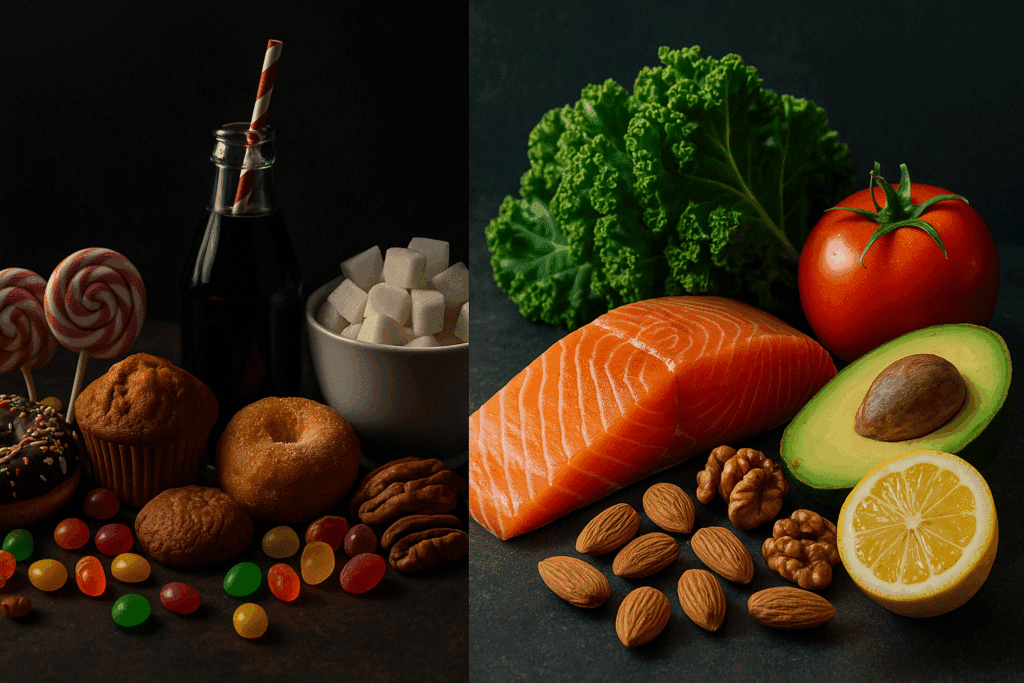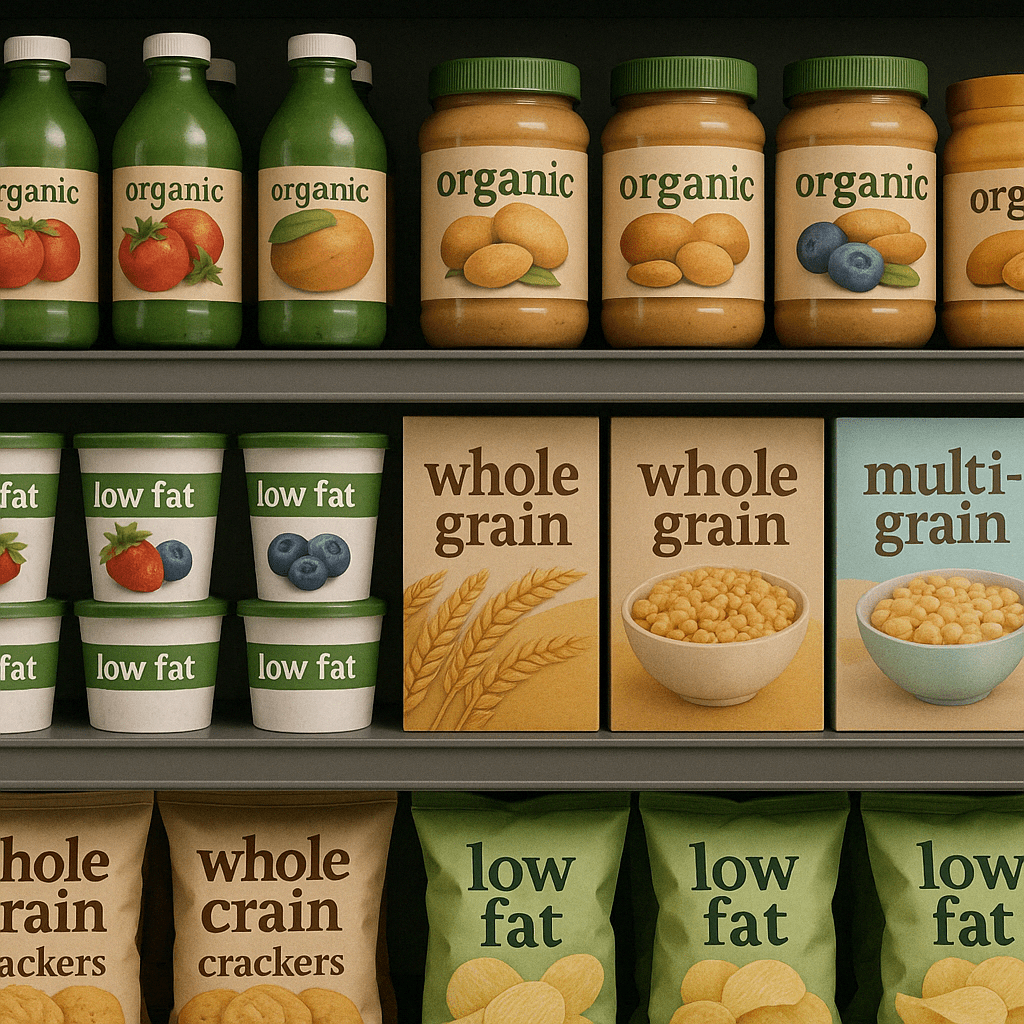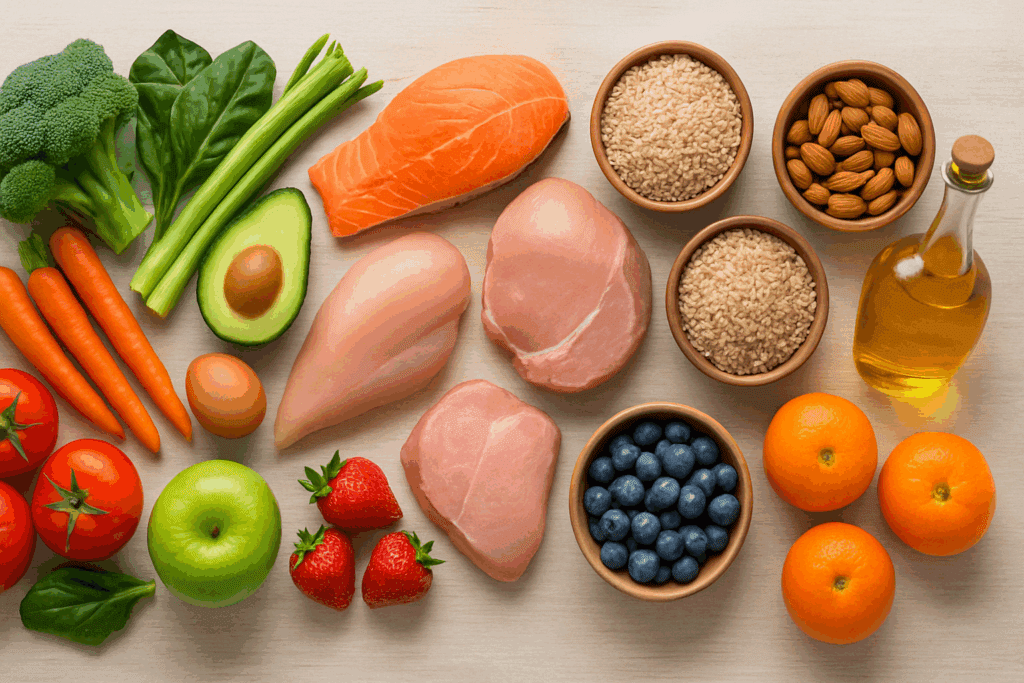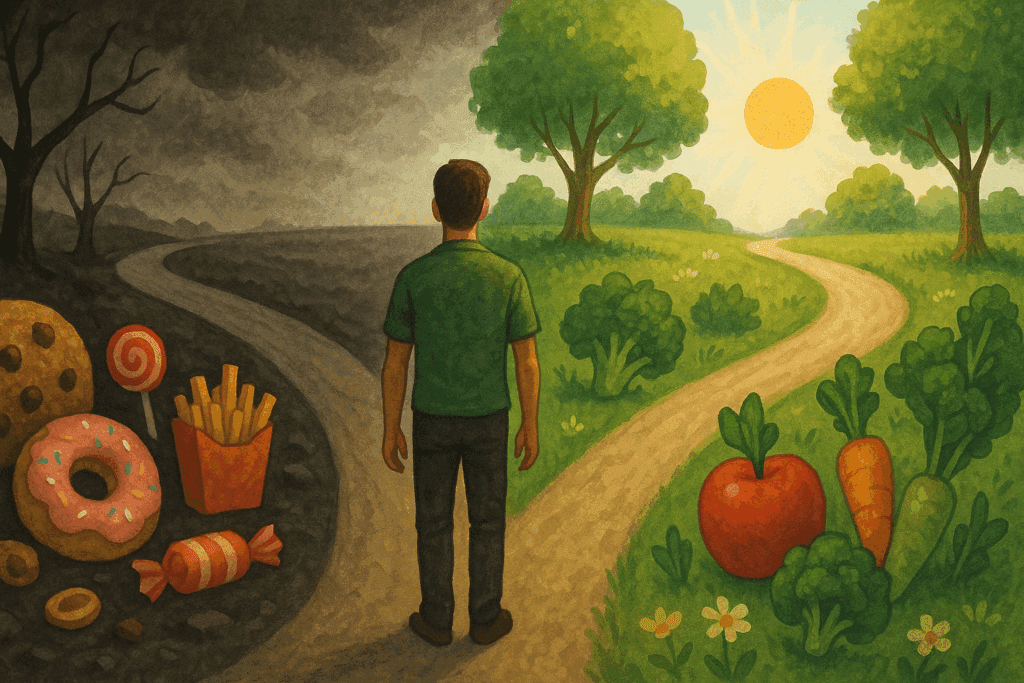In an age where chronic diseases like obesity, type 2 diabetes, and heart disease are on the rise, the role of added sugar in the modern diet has become a topic of urgent discussion. While sugar is not inherently harmful in its natural form—as found in fruits and vegetables—it becomes problematic when consumed in excess, especially in its refined and added forms. The average adult now consumes significantly more sugar than the body needs, much of it unknowingly through processed foods, beverages, condiments, and even so-called “health” products. This excessive intake often leads to unstable blood sugar levels, inflammation, metabolic issues, and even mood swings. For those seeking to restore balance, exploring a no sugar diet presents a viable, empowering path toward holistic health.
A no sugar diet plan is not about deprivation or punishment. It’s a strategy to restore your body’s natural rhythm by removing artificial highs and crashes caused by added sugars. The goal is to eliminate or significantly reduce sources of refined sugar while increasing your intake of nutrient-dense, whole foods that support stable energy and metabolic health. By following a no sugar diet food list filled with whole, nourishing options, you can break free from sugar dependence and start enjoying the benefits of improved mood, mental clarity, better sleep, and a more stable weight. This article offers practical strategies for how to cut out sugar, shares a detailed list of sugar free diet foods, and guides you through a sustainable lifestyle shift rooted in science and common sense.

Why Reducing Sugar Intake Is Crucial for Health and Wellness
The effects of sugar on health go beyond weight gain and cavities. Scientific studies have established strong correlations between high sugar consumption and conditions like nonalcoholic fatty liver disease, insulin resistance, and cardiovascular disease. Sugar’s ability to spike blood glucose levels and trigger insulin responses makes it particularly dangerous when consumed regularly and in hidden forms. For individuals wondering how to eliminate sugar from your diet, it’s important to understand that even small amounts of added sugar, when consumed daily, can contribute to chronic inflammation and long-term health decline.
Interestingly, reducing sugar intake doesn’t just influence physical health. Research has shown that excess sugar can also affect mental clarity, emotional regulation, and sleep quality. This is because sugar impacts the gut-brain axis, disrupting the microbiome and altering neurotransmitter production. By embracing a sugar free diet plan, individuals often notice improvements not only in their energy levels but also in mood stability and cognitive performance. These benefits provide compelling motivation for anyone looking to undertake a no sugar challenge and stick with it over time.
You may also like: Why Am I Craving Sweets All of a Sudden? Expert-Backed Reasons and How to Stop Sugar Cravings Naturally

Understanding Hidden Sugars in Everyday Foods
A major hurdle for those attempting to follow a no sugar diet is the prevalence of hidden sugars in packaged and processed foods. Sugar goes by many names—over 50, in fact—including maltose, fructose, corn syrup, and barley malt. It’s often added to enhance flavor or extend shelf life but is rarely highlighted unless consumers know what to look for. If you’re committed to how to stop consuming sugar, one of the first steps is learning to read nutrition labels critically.
Common sources of hidden sugar include salad dressings, sauces, yogurt, granola bars, cereals, protein powders, and even savory items like crackers and canned soup. Even foods labeled “natural” or “low fat” often compensate with added sugars to enhance palatability. Transitioning to foods with no sugar means not just avoiding dessert—it requires being aware of the ingredients in everyday staples. Choosing non sugar foods to eat means opting for options with no added sweeteners, artificial or otherwise, and embracing whole foods that nourish rather than stimulate your taste buds excessively.

How to Stop Eating Sugar Without Feeling Deprived
Eliminating sugar is a challenge for many people because sugar is both physiologically and emotionally rewarding. It activates the brain’s reward system in a way similar to certain addictive substances, which helps explain why cravings can be intense. Learning how to not eat sugary foods isn’t about discipline alone—it’s about rewiring habits, understanding biological signals, and creating satisfying alternatives.
A successful approach involves gradually reducing sugar intake over time. This minimizes withdrawal symptoms and gives your taste buds a chance to recalibrate. Swapping sugary snacks with foods that have no sugar—like nuts, seeds, plain Greek yogurt, or roasted chickpeas—can provide satiety without the crash. Cooking at home also becomes a powerful strategy since it gives you complete control over ingredients. Instead of sugary sauces or marinades, try herbs, spices, vinegar, citrus, or tahini to flavor dishes. These substitutions help you feel satisfied while staying committed to your no sugar diet plan.
Building a Sustainable No Sugar Diet Plan
To succeed long-term, a no sugar diet plan must be tailored to your lifestyle, preferences, and nutritional needs. This isn’t a one-size-fits-all journey—it’s about creating a framework that prioritizes sugar free foods to eat while maintaining enjoyment and flexibility. The most successful plans focus on crowding out sugary foods by filling your plate with colorful, nutrient-rich ingredients that stabilize your blood sugar and provide lasting energy.
Start by planning your meals around whole, unprocessed foods. A typical day might begin with scrambled eggs or tofu with vegetables, avocado, and a slice of sourdough bread. Lunch could include a lentil and quinoa salad with olive oil and lemon dressing, while dinner might consist of roasted cauliflower, chickpeas, and tahini over greens. Between meals, rely on no sugar diet foods like raw nuts, veggie sticks with hummus, or hard-boiled eggs to stay full. Planning ahead and preparing snacks ensures you’re not caught off-guard and tempted by processed convenience foods.

The Ultimate No Sugar Diet Food List for Healthy Living
Creating a master no sugar diet list of approved foods gives you a foundation for success. At the top of this list are non-starchy vegetables, including leafy greens, cucumbers, broccoli, and bell peppers, all of which are rich in fiber and free of added sugar. Healthy proteins like lentils, beans, organic eggs, tofu, and wild-caught fish offer satiety and blood sugar stability. Whole grains such as oats, quinoa, and barley, when unsweetened, provide long-lasting energy and nutritional value.
For those seeking foods that contain no added sugar, fruits like berries, green apples, kiwi, and grapefruit are excellent choices in moderation, especially when paired with protein or fat. Unsweetened plant milks, plain yogurt, fermented vegetables, and healthy fats like nuts, seeds, olives, and avocados are essential components of a satisfying no sugar diet. Understanding what to eat on the no sugar diet means embracing a wide variety of textures, flavors, and nutrients that keep you full and energized.

How to Avoid Sugar in Social Situations and Eating Out
Navigating social events, work gatherings, or restaurant meals can be difficult for anyone following a no sugar challenge. From birthday cakes to happy hour cocktails, sugar is often center stage. Learning how to avoid sugar in these environments requires both strategy and self-confidence. One of the simplest tips is to eat before going out. A small, nourishing meal built from sugar free diet foods helps prevent impulsive eating.
When dining out, choose dishes that are grilled, roasted, or steamed, and ask for sauces or dressings on the side. Request modifications when needed, such as skipping sugary glazes or breaded coatings. Don’t hesitate to ask your server questions about ingredients—more restaurants than ever are accommodating dietary preferences. Bring your own snacks if you’re uncertain about what’s available. Most importantly, remind yourself why you’re on this journey: each decision is a step toward a healthier you.

Sugar Cravings and Their Root Causes: A Science-Backed Look
Sugar cravings are often misunderstood as simple temptations, but they usually stem from a deeper imbalance. When blood sugar levels dip too low due to skipped meals or excessive caffeine, the body seeks quick fuel—often in the form of sugar. Emotional stress, fatigue, and even dehydration can trigger cravings as the brain searches for comfort and stimulation. Understanding how to stop eating sugar means addressing these underlying causes head-on.
By prioritizing balanced meals that include fat, protein, and fiber, you naturally reduce the frequency and intensity of cravings. For example, starting your day with eggs, avocado, and sautéed spinach provides a stable energy base that wards off the mid-morning sugar crash. Staying hydrated, getting quality sleep, and managing stress through mindfulness or gentle movement also support this process. When cravings hit, reach for foods to eat without sugar that still satisfy texture and taste—like cinnamon-spiced nuts, roasted pumpkin seeds, or a crunchy apple.

Overcoming the Psychological Addiction to Sugar
For many people, sugar isn’t just a physical craving—it’s a psychological comfort. From childhood rewards to emotional coping tools, sugar often holds symbolic power. Learning how to give up sugar requires acknowledging these emotional attachments and replacing them with healthier alternatives. Practicing mindfulness can help break this emotional cycle by increasing awareness of your motivations, triggers, and responses to cravings.
Journaling your experience during a no sugar challenge can be illuminating. Tracking how certain meals make you feel, how energy fluctuates, or how sleep improves can reinforce motivation. Consider therapy or support groups if emotional eating is deeply rooted in trauma or anxiety. Replacing sugar with intentional rituals—such as sipping herbal tea, taking a short walk, or listening to calming music—can create new pathways for self-care that don’t rely on sweets. Over time, the emotional dependence fades, and what once felt like sacrifice becomes a meaningful lifestyle choice.
Reaping the Rewards of a No Sugar Lifestyle
The benefits of eliminating sugar often begin to emerge within just a few days. Many people report more consistent energy, clearer skin, better digestion, and reduced bloating within the first week. Over longer periods, the results compound. Insulin sensitivity improves, inflammatory markers decrease, and weight begins to stabilize naturally. By consistently choosing food that does not have sugar, you teach your body to burn fuel more efficiently and reduce its dependence on glucose spikes.
Psychologically, people often describe feeling “free” after breaking sugar’s hold. No longer governed by cravings, they experience greater control and satisfaction from meals. Many also rediscover the subtle sweetness of foods that have no sugar naturally, such as roasted carrots, ripe strawberries, or sautéed onions. These changes enhance quality of life, making a no sugar diet not just doable, but deeply rewarding.
Frequently Asked Questions (FAQ): Smart Strategies to Cut Sugar from Your Diet Naturally
1. Can a no sugar diet improve cognitive function and mental clarity?
Yes, emerging research suggests that following a no sugar diet can enhance cognitive performance, especially over the long term. Excessive sugar intake—particularly from processed and refined sources—can lead to inflammation in the brain and impair memory and learning. By focusing on foods with no sugar, such as leafy greens, omega-3-rich seeds, and fermented vegetables, individuals may experience fewer energy crashes and more sustained mental focus throughout the day. A well-designed no sugar diet plan supports a healthy gut microbiome, which directly influences the brain through the gut-brain axis. As sugar-free living becomes more popular, neuroscientists are beginning to study how cutting out added sugar may help delay age-related cognitive decline.
2. How can I manage social pressure while following a no sugar diet?
Navigating social situations while on a no sugar diet can be challenging, especially when desserts or sugary drinks are involved. One strategy is to bring your own snacks or dish made from non sugar foods to eat, ensuring you have a satisfying alternative. Educating friends and family about your goals and the benefits of sugar free diet foods can also help build understanding and support. You might be surprised how many people become curious or inspired by your efforts to reduce sugar. Developing a script for polite refusals can reduce anxiety and make it easier to stay aligned with your no sugar challenge without feeling isolated.
3. Are there psychological strategies to help me stop sugar cravings?
Absolutely. Many people struggle with how to stop eating sugar because cravings are deeply tied to habits and emotional triggers. Cognitive behavioral techniques like “urge surfing” can help you acknowledge cravings without acting on them, allowing the urge to pass naturally. Visualization and journaling are also powerful tools for reprogramming your associations with sugary foods. When focusing on how to give up sugar, it’s helpful to develop new rituals—like tea after meals or mindful movement—that satisfy the emotional need without relying on food. Over time, the brain’s reward system adapts, and cravings diminish, especially when you’re fueling your body with sugar free foods to eat consistently.
4. What are some overlooked foods that contain hidden sugar?
While most people know to avoid soda and candy, many underestimate the hidden sugars found in seemingly healthy items. Store-bought pasta sauces, canned beans, sandwich bread, and even veggie chips often contain added sugars under names like “cane juice,” “maltodextrin,” or “agave nectar.” When curating a no sugar foods list, it’s essential to look beyond sweetness and focus on ingredient labels. Even nut butters and plant-based milks marketed as healthy may contain syrups unless labeled clearly as foods that contain no added sugar. Becoming adept at identifying sugar’s many aliases is key to mastering how to avoid sugar in everyday foods.
5. How do I transition my kids or family to a no sugar diet without resistance?
Shifting an entire household toward a no sugar diet requires patience and strategy. Start by introducing no sugar diet foods gradually rather than making sudden, restrictive changes. Involve children in cooking with colorful, foods to eat without sugar, like bell pepper boats, sweet potato fries, or banana-oat pancakes without added syrup. Reframe the change as a fun experiment rather than a punishment, and let everyone help build a no sugar diet list together. Positive reinforcement and education about how to cut sugar out of your diet—without fear or shame—helps build intrinsic motivation. Making the change together can also strengthen family bonds around health and well-being.
6. Can a no sugar diet support hormonal balance or fertility?
Yes, reducing added sugar intake can support hormonal health, especially in people dealing with conditions like polycystic ovary syndrome (PCOS) or insulin resistance. High sugar diets can cause elevated insulin levels, which in turn disrupt the production of sex hormones. Following a sugar free diet plan built around stable blood sugar and anti-inflammatory foods may help regulate menstrual cycles and ovulation in some individuals. By prioritizing foods containing no sugar—like legumes, cruciferous vegetables, and healthy fats—people may see improvements in hormone-related symptoms. It’s important to work with a healthcare provider, but incorporating non sugar foods can be a powerful step toward restoring hormonal equilibrium.
7. How does a no sugar diet affect gut health?
Sugar can negatively impact gut health by feeding pathogenic bacteria and reducing microbial diversity. By switching to foods that have no sugar, you’re creating a gut environment that supports beneficial bacteria. This shift is particularly important when crafting a no sugar diet plan that includes fermented foods, resistant starches, and prebiotic fibers. Over time, people often report better digestion, reduced bloating, and fewer cravings after reducing sugar. Supporting the gut with sugar free diet foods like sauerkraut, kefir, lentils, and leafy greens not only helps digestion but also positively affects mood and immunity due to the gut-brain connection.
8. What are some meal prep tips for maintaining a no sugar diet during a busy week?
Planning ahead is key to staying consistent with a no sugar diet, especially when time is limited. Batch cooking staples like roasted vegetables, quinoa, and hard-boiled eggs can save time while ensuring you always have foods with no sugar on hand. Pre-cut vegetables, unsweetened hummus, and sugar free foods to eat like olives or canned wild salmon can serve as fast lunch or dinner bases. Keep a visible list of your favorite no sugar diet food list items on your fridge to simplify grocery shopping and reduce decision fatigue. Meal prep apps or printable planners tailored to a no sugar diet list can also streamline the process and prevent last-minute sugar-laden takeout choices.
9. Are there any new innovations or trends in the sugar-free food industry to watch?
Yes, the demand for sugar free diet foods has spurred innovation in food tech and clean-label manufacturing. Brands are creating snacks using monk fruit, allulose, and stevia, which provide sweetness without the glycemic spike. Advances in fermentation have allowed for naturally sweetened yogurts and sauces made from foods that do not have sugar, yet still taste satisfying. There’s also a rise in personalized nutrition services that provide AI-generated no sugar diet plans based on DNA, blood glucose, and microbiome profiles. As more people seek out non sugar foods to eat, expect even greater transparency and creativity in the no sugar foods list available on grocery shelves.
10. What are some long-term strategies to make a no sugar diet feel effortless?
Sustainability is the cornerstone of any successful lifestyle change. To make a no sugar diet feel intuitive, develop routines that minimize friction—like weekly meal prep, scheduled grocery runs, and packing emergency sugar free foods when traveling. Rotate your menu so meals stay exciting, incorporating global cuisines that rely on foods to eat without sugar, such as Mediterranean or traditional Asian dishes. Build a social circle or online community of others on a similar path to share ideas and accountability. Most importantly, stop viewing sugar reduction as a diet and start embracing it as a mindset centered on nourishment and self-respect. Over time, how to not eat sugary foods becomes less about resisting temptation and more about choosing what makes you feel truly well.
Conclusion: Embracing a No Sugar Diet as a Lifestyle, Not a Limitation
Adopting a no sugar diet is not a temporary fix—it’s a powerful, lifelong investment in your health. While the transition can be challenging, the rewards are undeniable. By replacing processed, sugary items with whole, sugar free foods to eat, you give your body a chance to heal, reset, and thrive. More importantly, you cultivate a sustainable way of eating that aligns with your long-term wellness goals.
This journey is about more than crossing items off a no sugar list—it’s about learning to listen to your body, make intentional choices, and reclaim your energy and vitality. With each sugar-free meal, you send a powerful message to yourself: that your health is worth prioritizing. Whether you’re just starting out or refining your approach, remember that every step forward counts. With the help of this no sugar diet food list, the support of science, and a deepened understanding of how to avoid sugar, you can transform your relationship with food and experience lasting, vibrant health.
Was this article helpful? Don’t let it stop with you. Share it right now with someone who needs to see it—whether it’s a friend, a colleague, or your whole network. And if staying ahead on this topic matters to you, subscribe to this publication for the most up-to-date information. You’ll get the latest insights delivered straight to you—no searching, no missing out.
Further Reading:
No-Sugar Diet: Food List and Seven-Day Plan
What to know about no-sugar diets
Disclaimer
The information contained in this article is provided for general informational purposes only and is not intended to serve as medical, legal, or professional advice. While NewsHealthWatch strives to present accurate, up-to-date, and reliable content, no warranty or guarantee, expressed or implied, is made regarding the completeness, accuracy, or adequacy of the information provided. Readers are strongly advised to seek the guidance of a qualified healthcare provider or other relevant professionals before acting on any information contained in this article. NewsHealthWatch, its authors, editors, and contributors expressly disclaim any liability for any damages, losses, or consequences arising directly or indirectly from the use, interpretation, or reliance on any information presented herein. The views and opinions expressed in this article are those of the author(s) and do not necessarily reflect the official policies or positions of NewsHealthWatch.

